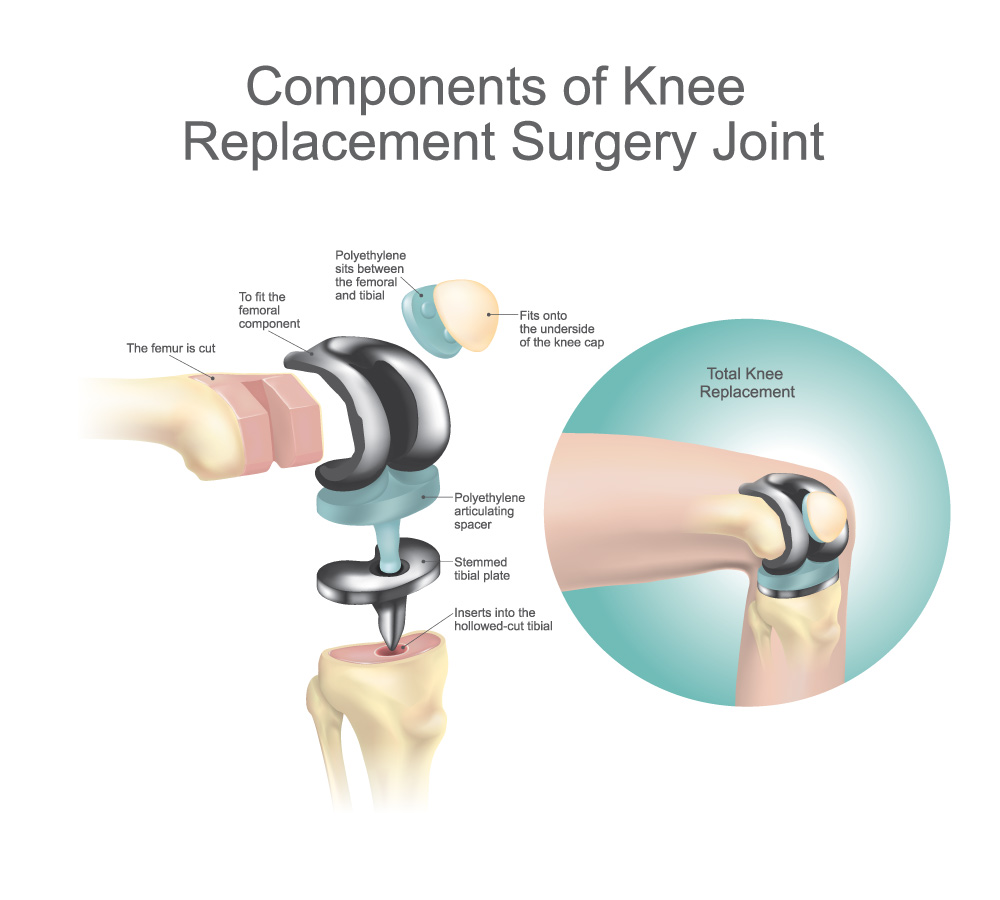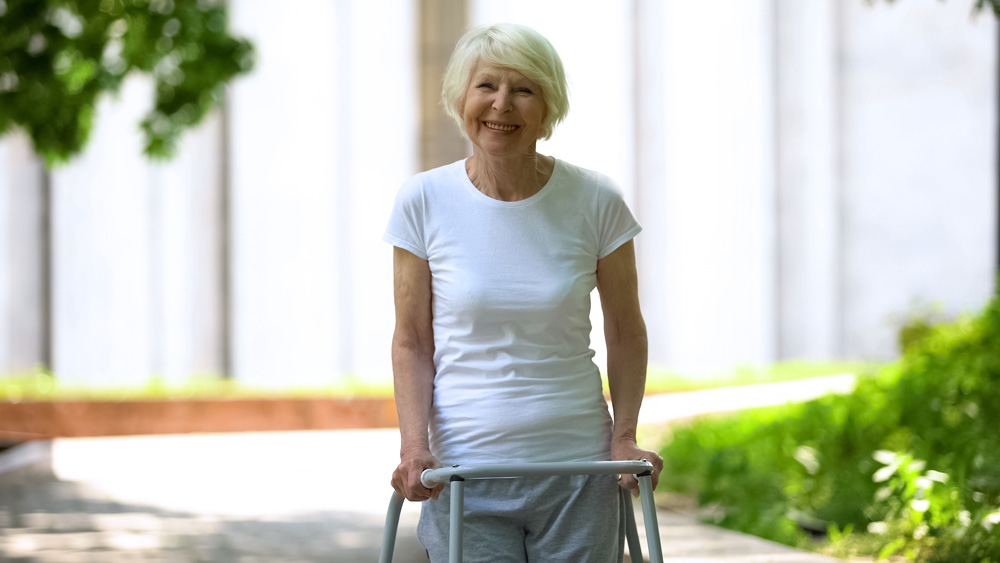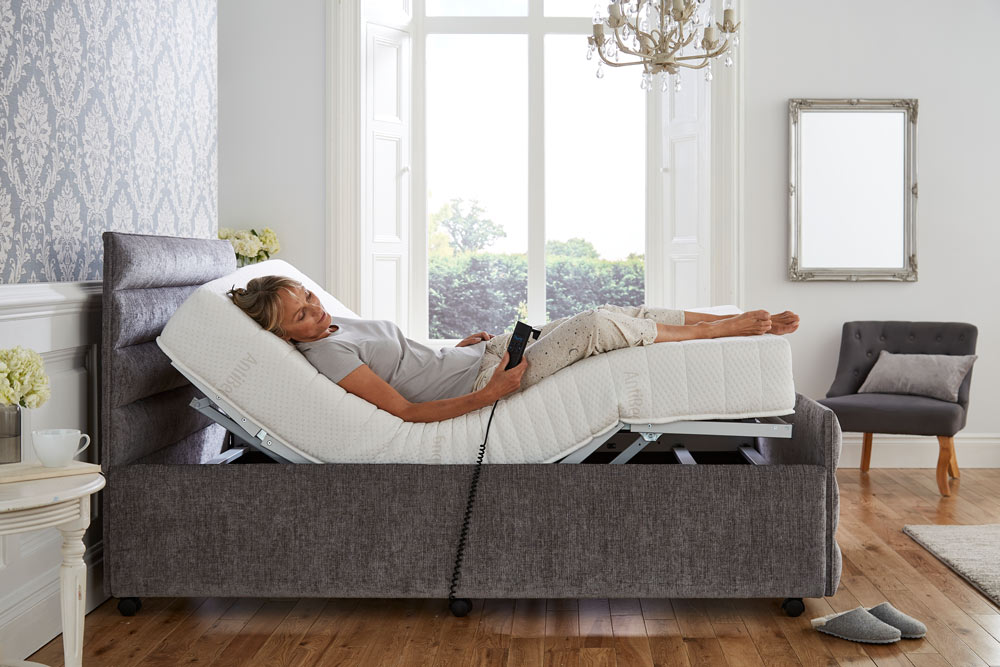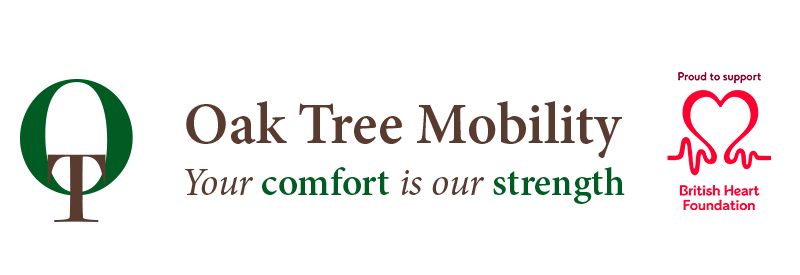Knee replacement surgery is a common procedure that involves replacing a worn or diseased knee with an artificial joint. Adults of any age could need one but it’s mostly carried out for people aged between 60 and 80. If the knee is expected to deteriorate within 10 years, partial knee surgery will be performed for those aged 55-64.
When does a knee need replacing?
If your knee is damaged it will likely cause reduced mobility and cause you pain even while resting. The most common reasons for damaged knees are:
· Osteoarthritis
· Rheumatoid arthritis
· Haemophilia
· Gout
· Disorders that cause unusual bone growth
· Death of bone due to lack of blood flow
· Knee injury
· Painful Knee deformity and loss of cartilage.
Who gets to have knee replacement surgery?
Knee replacement surgery is a major procedure so it is usually only offered if physiotherapy or steroid injection have not improved mobility nor reduced pain. You will be put forward for a knee replacement if:
· You have severe pain, swelling, stiffness in your knee joint and reduced mobility.
· The pain is so severe it affects your quality of life and sleep.
· Everyday tasks and daily activities such as shopping or getting out of the bath become difficult or impossible.
· You’re feeling depressed because of the pain and lack of mobility.
· You cannot work or have a social life.
· You also need to be well enough to cope with a major operation and the rehabilitation.

What are the different types of knee replacement surgeries?
The two main types are:
· Total knee replacement surgery, in which both sides of the knee joint are replaced.
· Partial (half) knee replacement, in which only one side of your joint is replaced. This is a smaller operation and results in a shorter hospital stay and recovery times.
Are there other surgery options?
These alternative options often don’t have as good results in the long term. Always ask your doctor for the best course of action.
· Arthroscopic washout and debridement. This is when a tiny telescope is inserted into the knee which is then washed out with a saline solution to clear any bits of bone or cartilage.
· Osteotomy. This is when the shin bone is cut and realigned to that your weight is no longer carried on the damaged part of the knee.
· Mosaicplasty. This is a keyhole surgery that involves transferring plugs of hard cartilage, together with some underlying bone from another part of your knee, to repair the damaged surface.
Recovering from a knee surgery
Recovering from a knee replacement depends on the individual and the type of surgery. Always follow the advice of your doctor to know how to look after your new knee.
What happens after the surgery?
In the recovery ward, you may be given a switch to self-administer painkillers for pain relief. You may be given oxygen tubes or a mask. You also might need a blood transfusion. You’ll have a large dressing to protect your wound and a tube may be put in place to drain blood to prevent blood clot. Your wound dressing will be changed regularly until it’s healed.
How soon will I be up and about after knee surgery?
You’ll be a helped to walk as quickly as possible. If you’ve had keyhole surgery you might be able to walk the same day. Generally, you’ll be helped to stand within 12-24 hours after your operation.
Walking with a frame or crutches is advised. While you’re in hospital a physiotherapist will teach you the exercises you will need to help strengthen your knee. It’s normal to have some discomfort while walking and exercising at first. You may be put on a passive motion machine to restore movement in your knee. The machine slowly moves your knee while you’re lying down. It will help decrease swelling and help circulation.
When will I go home after knee surgery?
It usually takes between 3-5 days depending on what progress you’ve made and the type of surgery.
How will I recover at home after knee surgery?
You are likely to feel extremely tired and the muscles and tissue will need time to heal. Always follow the advice of your GP or surgeon. After you’re discharged from hospital you might be eligible for up to 6 weeks of home help and maybe aids to help you. The physiotherapist will give you exercises that are integral to your recovery.

How long does a knee replacement take to heal?
You should be able to stop using crutches or a walking frame and resume normal leisure activities after 6 weeks. It may take up to 3 months for the pain and swelling to settle down and a year for the leg swelling to disappear. Your new knee will take 2 years to recover and scar tissue and muscles can be restored with exercise.
Even after your recovery, avoid extreme movements or sports where there’s a risk of falling like skiing or mountain biking.
When can I drive again after a knee replacement?
You can drive your car when you can get in and out of the car and control the pedal properly. This is usually 6-8 weeks but always check with your GP or physiotherapist.
When can I go back to work after knee replacement surgery?
This depends on your job, but you can usually return between 6-12 weeks.
When can I do housework?
In the first 3 months, you should be able to manage light chores like dusting and washing up. Avoid heavy tasks like hoovering and bed making. Don’t stand for long periods which may cause ankle swelling and avoid bending or stretching.
How long will a knee replacement last?
Due to wear and tear through everyday use, your replacement knee might not last forever. Around 1 in 20 people who have had a knee replacement will need further surgery after 12 years. However, this depends on the type of replacement, for example, total knee replacements tend to last longer than partial knee replacements.
How to look after your new knee
· Continue to take prescribed painkillers or anti-inflammatories to manage pain and swelling.
· Use walking aids, but gradually decrease your use of them as you get stronger.
· Keep up your exercises to help prevent stiffness, but don’t force your knee.
· Don’t sit with your legs crossed for the first 6 weeks.
· Do not put a pillow underneath your knee when sleeping as this can result in a permanently bent knee.
· Avoid twisting your knee.
· Wear supportive shoes outdoors.
· Do not kneel on your knee cap until your surgeon says so.
· Raise your leg when sitting and apply an ice pack wrapped in a tea towel for 20 minutes every 3-4 hours to reduce any swelling.

Can an electrically adjustable bed help with my knee replacement recovery?
Circulation, swelling and healing
You may find that there is extra swelling in your knee or leg after the surgery. Sleeping with your feet elevated on an adjustable bed places your feet at the same level as your heart. This allows the blood to flow easier around the body and reduce swelling.
Healthy blood flow will also contribute to a speedy recovery of your knee replacement.
Get in and out of bed
You must do the exercises that your physiotherapist sets for you, but equally, you don’t want to put too much pressure on your new joint. An adjustable bed can help you get in and out of bed without loads of pressure being put on your knee.
Support
You should never use a pillow to support your recovering knee because it will cause your knee to heal in a bent position. This is because it’s not properly supporting your knee. When you lie down flat, there is a small space between the mattress and the backs of your knees. This gives your knees no support. However, using an adjustable bed to support them in a semi-contoured position will help support your knee joint while it heals.








Would like to know width of beds
Hi Ro,
If you give us a call us on our free number someone will be able to help you with the measurements of our adjustable beds.
Kind regards
Oak Tree